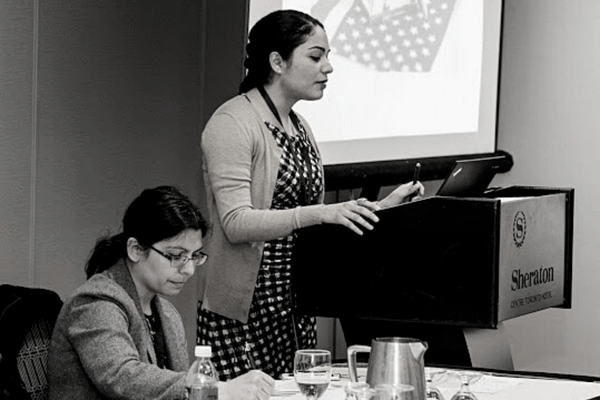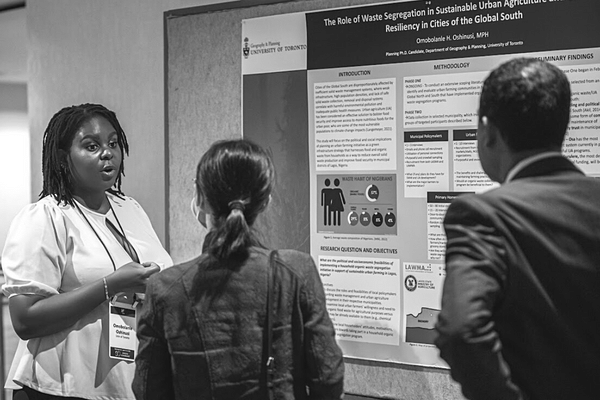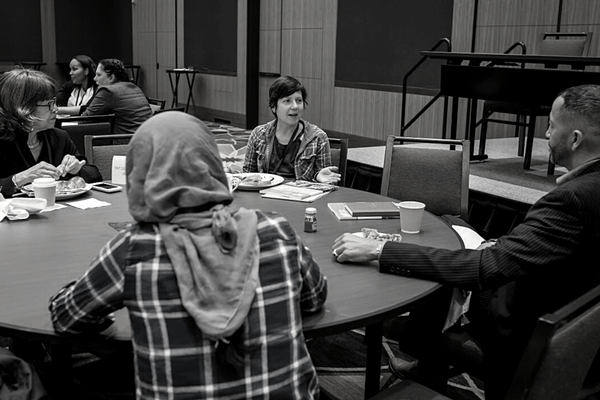The conference provides four session format options for conference presentations. A brief description of each session format is provided below.



Paper Panels Are Created in Two Ways
Session Time Structure & Presenter Responsibilities
Paper panels are 90 minutes long. Within each session, approximately 15-20 minutes should be reserved for open discussion.
🔥 Click to view paper submission requirements
Presentation Information: A windows-based computer, projector, projector screen, and lectern are provided in each session room. No microphones or electronic speakers are provided in the rooms, due to cost. Most presenters deliver their presentations using the aid of presentation slides (e.g. PowerPoint slides, PDF of slides). Before the start of each session, presenters should upload slides onto the computer in the session room. Please do not attempt to connect your personal computer to the equipment in the session room. This typically causes significant delays, which reduces the time that each speaker has to make their presentation. Further, there are often equipment/port compatibility issues when presenters try to connect their own computers.
A colloquy is a structured, formal discussion of a topic by a few individuals (typically four or five speakers) who have developed a discussion plan. Each individual speaker makes prepared comments. After all speakers have spoken, they then engage in an open discussion with the audience. Colloquy speakers do not, however, present written papers or in-depth research findings. Instead, speakers draw upon their general knowledge, background, and experience of the subject being discussed.
Session Time Structure & Presenter Responsibilities
Colloquy sessions are 90 minutes long. Within each session, approximately 15-20 minutes should be reserved for open discussion.
Presentation Information: A windows-based computer, projector, projector screen, and lectern are provided in each session room. No microphones or electronic speakers are provided in the rooms, due to cost. Most presenters deliver their presentations using the aid of presentation slides (e.g. PowerPoint slides, PDF of slides). Before the start of each session, presenters should upload slides onto the computer in the session room. Please do not attempt to connect your personal computer to the equipment in the session room. This typically causes significant delays, which reduces the time that each speaker has to make their presentation. Further, there are often equipment/port compatibility issues when presenters try to connect their own computers. While WiFi is provided in the meeting space, please do not plan to share information with the session audience over WiFi because the connection may not be consistently stable.
Poster sessions are the best option for researchers at early stages of their work.
Poster session submissions are welcome on any topic and may include an analysis of a solution to a problem; a report of a research study; or any other presentation that would benefit the larger urban affairs community.
Poster Design Guidelines
Please review the poster design guidelines carefully.
Poster Presentation Guidelines
Presenters populate their posters with pictures, data, graphs, diagrams, narrative text, and informally discuss their presentations with conference attendees during the assigned 30 minute period.
A roundtable session is an informal discussion of a topic. The discussion is led by one or more persons but open to anyone who wishes to join in and share their views. Leading a roundtable is a good way to meet people who share your interests.
Because roundtable sessions take place in a ballroom at round banquet tables, the use of audio-visual aids and equipment (other than a laptop computer) is not possible.
Roundtable sessions are scheduled for a 45-minute period. If you are leading the discussion, plan to arrive 15 minutes prior to the start time to ensure that interested persons are greeted.
An individual who is not involved in any other form of participation, but would like to play a limited role as a moderator. Their primary role is to make introductions and manage time. Complete Moderator Guidelines
